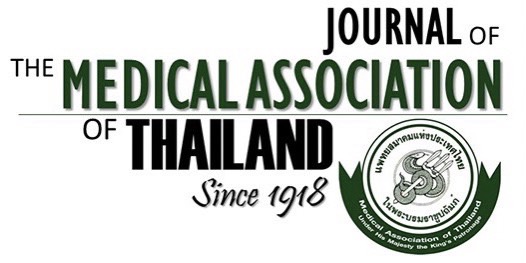Comparison of Quality-of-Life after the Three Different Techniques of Transpedicular Screw Fixation (TPSF) in Lumbar Spondylolisthesis (LS): Results of a Therapeutic Cohort Study
Ueaungkun Sitthimongkon MD*, Teera Tangviriyapaiboon MD*, Prasert Iampreechakul MD*, Kullapat Veerasan MD*, Sawing Punjaisee MD*, Wuttipong Tirakotai MD, MSc, Dr. med*
Affiliation : * Department of Neurosurgery, Prasat Neurological Institute, Bangkok, Thailand
Background : Transpedicular screw fixation in lumbar spondylolisthesis remains debatable for which aspects that provide
better quality of life outcomes such as procedure of convention, navigation-assisted or mini-open technique.
Objective : To analyze the clinical outcomes and assess pre-operative versus postoperative quality-of-life outcomes of patients
diagnosed with LS who underwent three different techniques of spinal fusion.
Material and Method: A prospective cohort study was conducted with 60 patients with LS who received conventional TPSF
or navigation-assisted TPSF or mini-open TPSF at Prasat Neurological Institute between 2010 and 2012. The 12-month
follow-up patients were recruited for a structured interview regarding social life, mental health, functional capacity or an
independent living status. The quality-of-life measurement was determined using Oswestry Disability Index (ODI) and the
Short Form-36 Health Survey (SF-36).
Results : Comparisons of quality of life outcomes declared significant differences through the 12-month follow-up evaluation.
According to ODI, navigation-assisted group presented with significant level of faster recovery than conventional and mini-
open groups at one week (p = 0.031) and one month (p = 0.008) after surgery. At one year follow-up, the navigation-assisted
technique was noted to have a significant better improvement (p = 0.033 and mean ODI scores = 5.8) compared with
conventional and mini-open techniques (mean ODI scores = 8.7 and 10.6, respectively). Moreover, SF36 assessment
indicated considerably improvement at 12 months after surgery. In addition, the finding reveals no statistically significant
differences among three techniques.
Conclusion : Overall, three different techniques provide the positive outcomes of quality of life. The 12-month follow-up of
quality of life measures based on ODI suggest that the navigation-assisted technique was significantly associated with well-
recovered at one week and one month after surgery. However, in terms of clinical outcomes, they do not make any considerable
differences to patient care within the 12-month follow-up period.
Keywords : Quality of life, Oswestry Disability Index, Short Form-36 Health Survey, Clinical outcomes, Pedicle screw, Lumbar spondylolisthesis.



